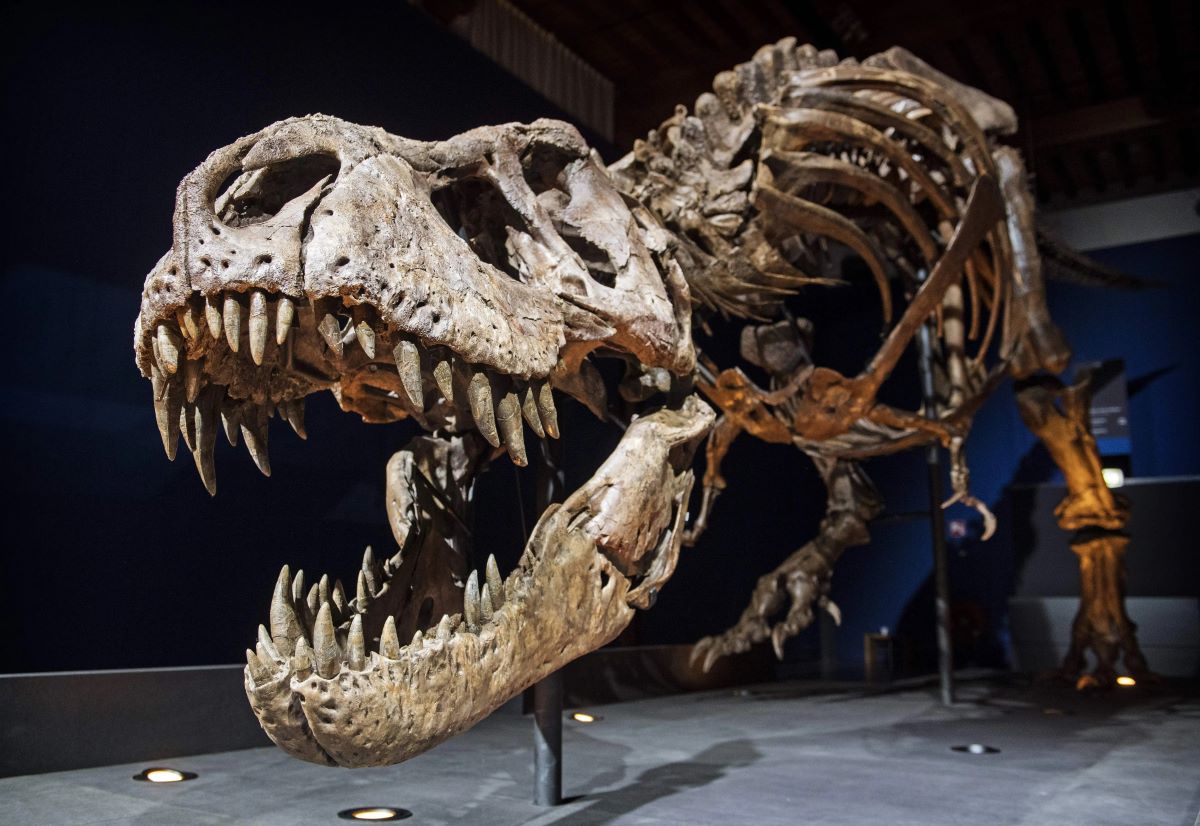
Paleontology, the study of ancient life through the examination of plant and animal fossils, is a field that has captivated the imagination of scientists and the general public alike. It offers a window into the distant past, allowing us to uncover the secrets of the Earth’s history and the evolution of life on our planet.
In this article, we will delve into the fascinating world of paleontology and discover eight intriguing facts that will leave you amazed. From uncovering massive dinosaur fossils to deciphering ancient ecosystems, paleontologists have made remarkable discoveries that continue to shape our understanding of the natural world.
So, join us on this captivating journey as we explore the wonders of paleontology and unveil some of its most captivating and mind-boggling facts.
Key Takeaways:
- Paleontology is the study of ancient life forms, helping us understand Earth’s history through fossils and revealing the secrets of prehistoric ecosystems and human evolution.
- Paleontologists use delicate tools to excavate fossils, reconstruct ancient environments, and study extinction events, providing valuable insights into the Earth’s past and potential future biodiversity loss.
Paleontology is the study of prehistoric life forms.
Paleontology, derived from the Greek words “paleo” meaning old, and “ontos” meaning being or creature, is the scientific study of ancient life forms that once inhabited our planet. It involves the examination of fossils and other evidence to understand the history of life on Earth.
The first dinosaur bones were discovered in the 19th century.
In 1824, British anatomist Richard Owen coined the term “dinosaur” to describe the fossilized bones of ancient reptiles. This discovery revolutionized our understanding of the Earth’s history and paved the way for further paleontological research.
Paleontologists use a variety of tools to excavate fossils.
To carefully extract fragile fossils from rock formations, paleontologists use tools such as brushes, chisels, and dental picks. These delicate excavation techniques ensure the preservation of the fossils and enable scientists to study them in detail.
Fossils can reveal details about ancient ecosystems.
Paleontologists analyze fossils to reconstruct ancient environments and understand how different species interacted with each other. By examining the types of plants and animals that coexisted during a specific time period, scientists can gain insights into the Earth’s past biodiversity.
Paleontologists study both vertebrate and invertebrate fossils.
Paleontologists not only study the fossils of dinosaurs and other ancient reptiles but also explore the remains of ancient sea creatures, such as ammonites, trilobites, and early arthropods. This broadens our understanding of the history of life and the evolutionary processes that have shaped our planet.
Paleontology contributes to our understanding of human evolution.
By studying the fossil record, paleontologists have reconstructed the evolutionary history of humans and our ancestors. Fossil discoveries, such as Lucy (Australopithecus afarensis), have provided valuable insights into the origins and development of early hominids.
Paleontologists rely on a combination of fieldwork and laboratory analysis.
Paleontologists spend a significant amount of time in the field, searching for fossils in remote locations. Once fossils are collected, they are carefully cleaned, prepared, and analyzed in the laboratory. This interdisciplinary approach allows scientists to unlock the secrets preserved in ancient remains.
Paleontological research helps us understand the impact of extinction events.
By studying mass extinctions that have occurred throughout history, paleontologists can shed light on the causes and consequences of these events. Understanding past extinctions can provide valuable insights into the potential effects of ongoing environmental changes and help us mitigate future biodiversity loss.
As you can see, paleontology is a fascinating field that offers valuable insights into the past. Whether it’s uncovering ancient ecosystems or unraveling the mysteries of human evolution, paleontologists play a crucial role in understanding the history of life on Earth.
In conclusion, these 8 intriguing facts about paleontology provide just a glimpse into the vast realm of scientific discovery that paleontologists engage in. With every fossil unearthed, we come closer to unraveling the secrets of our planet’s past and gaining a deeper understanding of the complex web of life that has evolved over millions of years.
Conclusion
In conclusion, paleontology is a fascinating field that allows us to uncover the secrets of our planet’s history and the incredible creatures that once roamed the Earth. Through the study of fossils and the careful examination of ancient ecosystems, paleontologists provide us with valuable insights into the origins and evolution of life on our planet.From the discovery of Tyrannosaurus rex to the revelation that birds descended from dinosaurs, paleontology continues to shape our understanding of the natural world. By piecing together the puzzle of the past, we gain a deeper appreciation for the diversity of life and the interconnectedness of species throughout time.So whether you’re captivated by the mighty dinosaurs or curious about the ancient organisms that once inhabited the Earth’s oceans and landscapes, exploring the world of paleontology is sure to ignite your imagination and expand your knowledge of the incredible journey life has taken on our planet.
FAQs
1. What is paleontology?
Paleontology is the scientific study of prehistoric life through the examination of fossils, which are the preserved remains or traces of ancient organisms.
2. How do paleontologists find fossils?
Paleontologists search for fossils by locating areas with sedimentary rocks, where fossils are most likely to be preserved. They may conduct field expeditions to dig for fossils or study existing collections in museums and research institutions.
3. How old are the fossils that paleontologists study?
Fossils can range in age from a few thousand years to millions of years old. Paleontologists study fossils from various geological time periods to understand the history of life on Earth.
4. What can fossils tell us about ancient organisms?
Fossils provide valuable information about the morphology, behavior, and ecological interactions of ancient organisms. They can help us reconstruct past ecosystems and understand the evolution of different species over time.
5. How do paleontologists determine the age of fossils?
Paleontologists use a variety of techniques to determine the age of fossils, including radiometric dating, relative dating methods, and correlation with other well-dated fossils and rock layers.
6. Can paleontologists infer the color and soft tissues of ancient organisms from fossils?
While rare cases of preserved soft tissues and pigments have been discovered, inferring the color and soft tissues of ancient organisms is challenging. Paleontologists rely on indirect evidence and modern analogs to make educated guesses.
7. What are some remarkable discoveries made by paleontologists?
Paleontologists have made numerous extraordinary discoveries, including the fossils of dinosaur species, early human ancestors, marine reptiles like ichthyosaurs and plesiosaurs, and the earliest evidence of life on Earth.
8. How does paleontology contribute to our understanding of evolution?
Paleontology provides a critical window into the past, allowing us to observe the evolutionary changes that have occurred over millions of years. By studying the fossil record, paleontologists can identify transitional forms and track the development of different groups of organisms.
Paleontology holds countless wonders waiting to be explored. From the enigmatic facts that shed light on prehistoric life to the groundbreaking work of early pioneers like Mary Anning, this field is rich with captivating stories. Evolutionary paleontology offers intriguing insights into how life has changed over millions of years, revealing the intricate connections between ancient creatures and their modern descendants. Whether you're a budding paleontologist or simply curious about the distant past, these articles will take you on a thrilling adventure through time.
Was this page helpful?
Our commitment to delivering trustworthy and engaging content is at the heart of what we do. Each fact on our site is contributed by real users like you, bringing a wealth of diverse insights and information. To ensure the highest standards of accuracy and reliability, our dedicated editors meticulously review each submission. This process guarantees that the facts we share are not only fascinating but also credible. Trust in our commitment to quality and authenticity as you explore and learn with us.


